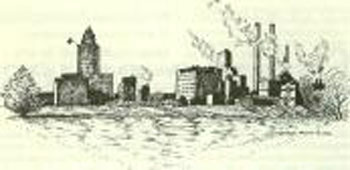
By DANIEL M. JOHNSON, DOH C. SHIN and ROBERT V. HILLMAN
Director of the Center for Middle-size Cities at Sangamon State, Johnson is associate professor of sociology and public affairs at the university. Shin is assistant professor of political studies and public affairs and is research associate with the center. Hillman is a graduate assistant with the center.This article is exerpted from the authors' complete study, "The Quality of Life inThree Illinois Middle-size Cities. Springfield, Peoria and Decatur," published by Sangamon State University, Springfield. September 1976.
Comparing the quality of life in Decatur, Peoria and Springfield
Tale of three cities
Does where you live make a difference in how you feel about your life? Apparently it does, according to a survey of Decatur, Peoria and Springfield residents. Decaturites are satisfied with less money. Fewer women in Peoria like their jobs. Schools in Springfield get lowest rating. Residents also assess health service, governmental performance and crime in their communities
WILL IT PLAY IN PEORIA? That is the question city officials of Decatur, Peoria and Springfield should be asking themselves in the wake of a 1975 survey conducted by Sangamon State University. Citizens in the three cities were asked about the quality of their lives in10 different areas. The survey harvested a crop of negative feelings about public services in these three corn belt communities. Over 200 persons were contacted in each city, and half of them criticized the quality of public schools. One in every four persons expressed fears about being on the streets at night. A third of the people found fault with the effectiveness of sanitation, fire protection, and public transportation services, and nearly half of those interviewed accused local public officials of making policy decisions which go against the wishes of the majority of citizens. Clearly, all is not well on the prairie.
Government was blamed for both the declining quality of public education and for the increasing level of crime within the three cities. Indeed, residents vented their annoyance across the board at the performance of government. Many people clearly distrusted local government officials, fearing that these elected and appointed individuals often yielded to the dictates of prominent or influential citizens rather than to the wishes of the majority. In relation to the services rendered by government, 42 percent of those interviewed thought the tax bite too severe. In fact, 32 per cent of these midwesterners severely attacked the poor quality of such governmental services as public transportation, sanitation and fire protection.
Finally, the residents of the three cities saw government — at all levels — as detrimental to the quality of life, with the federal government the most injurious of all. Significantly, a fifth of those interviewed noted a recent decline in the quality of life, and predicted as much for the next five years, a pessimistic forecast indeed from the breadbasket of America.
Sangamon State University's Center for the Study of Middle-Size Cities amassed these findings as the result of telephone interviews with citizens of Decatur, Peoria and Springfield during the summer of 1975. Prompting the research was the need to identify the current and developing social problems of these middle-size cities so that solutions could be sought and priorities set.
In fairness to the three local governments, it should be noted that the survey gleaned many favorable comments concerning the quality of public services. The much derided educational system earned some plaudits: Decatur residents generally looked with favor on the local schools, though only 17 percent endorsed them unreservedly. People lavished considerable praise on the recreational resources of their communities, and nine out of ten people appeared satisfied with the manner in which their leisure time is spent.
Weighing the good with the bad, 56 per cent of those reached by the survey judged their cities to be very satisfactory places in which to live. Incontestably, residents saved their highest accolades for those things close at hand, namely, opportunities to enjoy family and friends, to live in satisfying environments, to enjoy good health and medical care, to hold rewarding jobs and to engage in enjoyable recreational activities. Despite the admittedly poor rating accorded to public services, the three cities excelled in providing climates whereby personal and social needs could be fulfilled.
Summaries of the responses of the nearly 700 citizens in seven of the ten categories are outlined below.
January 1977 / Illinois Issues / 11
Decatur

Money worries and satisfying salaries
Money, the amount that comes in and how it is spent, obviously has a powerful effect on the quality of our lives. The study of economic well-being in the three cities showed nine out of ten persons interviewed to be either "somewhat" or "very satisfied" with this element of their lives. Decatur ranked a little more satisfied than the other two cities. To test the level of financial anxiety among the respondents, the following question was asked: "Did you ever worry that your total family income will not be enough to meet your family's expenses and bills?" Almost 60 per cent of residents said they did not worry about expenses, while everyone else expressed concern about financial obligations. Of those persons who did worry about bills, nearly one-third said they did so "all" or "most of the time." The remaining two-thirds said they worry just "now and then" or "some of the time." Nearly identical proportions of chronic worriers were found in the three cities, but Springfield registered noticeably fewer sporadic worriers than did Decatur or Peoria.
The survey also attempted to learn whether the financial situation of respondents in the three cities had been "getting better," "staying the same," or "getting worse" during the past few years. Only about one-tenth (11.9 per cent) judged their personal financial situations to be "getting worse." Most people considered their economic pictures to be "getting better" (44.2 per cent) or "staying the same" (43.9 per cent). Peorians were more optimistic in this regard than residents of the other two cities, while a larger proportion of Springfield residents reported that their financial situation was "getting worse."
Asked the amount of yearly income required for a "satisfactory life," the largest proportion of respondents (37.4 per cent) expressed a need for more than $20,000 per year to lead a "satisfactory life." Approximately one-fourth (25.3 per cent) said they needed $15,000 to $20,000 and 25.7 per cent gave a figure between $10,000 and $15,000. Fewer than 10 per cent felt that a satisfactory life would be possible with $10,000 per year or less. Striking differences were found to exist among the cities, with 45 per cent of the Peorians claiming they required more than $20,000 annually, while only 37 per cent of the Springfield residents and 29 per cent of the Decaturites expressed a similar need. Over 13 per cent of the Decaturites said they could lead a satisfactory life on $5,000 to $ 10,000 as opposed to 7 per cent of Peorians and 9.1 per cent of Springfield residents.
In summary, the findings suggest that the vast majority of persons were satisfied with their standards of living. However, four out of ten people worried about making ends meet financially, and nearly one-third of these were "chronic worriers." Most people surveyed considered their financial situation to be at least staying the same or getting better, with Peoria residents expressing the highest figure. Finally, although half of the respondents felt that a satisfactory life could be enjoyed withfrom$10,000-$20,000 yearly income, more than a third of the residents claimed $20,000 a year to be inadequate.
Men and women
and their jobs
Employment figured prominently in the
minds of residents of the three cities, and is
demonstrably an essential element of the
quality of life. The findings indicate that the
work patterns in the three cities and among
men and women differed widely. For
example, a larger percentage of men than
Peoria also reported the lowest level of
female employment, 36.1 per cent, among
the three cities; 55.2 per cent and 39.4 per
cent were the figures for Springfield and
Decatur, respectively. The data show clearly
that Peoria had the most highly paid jobs,
The majority of nonworking men (69.8
per cent) were retired, while more than half
(52.8 per cent) of the nonworking women
gave some reason for their situations other
than being retired, such as student, or out of
work. Numerically, women represented a bulk of the unemployed workers in all three
cities.
Well over three-fifths of the respondents
— both males (63.5 per cent) and females
12 / January 1977 / Illinois Issues
the workers interviewed, most seemed very
satisfied or at least somewhat satisfied with
their jobs, although nearly 10 per cent
expressed some degree of dissatisfaction.
Public schools and
their own education
Amid all the controversy surrounding
public education, few attempts have been
made at the local level to solicit resident
opinion about the quality of public education. Accordingly, citizen perception was
sought on these topics: the quality of local
public schools and the satisfaction of
residents with the amount and quality of
their own education.
The results varied substantially among the
three cities. On the whole, citizens tended to
rate their public schools as "good" (36.8 per
cent), or "fair" (31.4 percent). Only 15.3 per
cent judged them to be "very good," while a
disturbing proportion rated them as "poor"
(9.7 per cent) or "very poor" (6.7 per cent).
Nearly two-thirds of the Decaturites and
half of the Peorians felt their schools "good"
or "very good," as compared to slightly over
one-third of the Springfield residents. A full
40 per cent of Springfield respondents felt
their schools were only "fair," compared to
30.6 per cent of the Peorians and 23.6 per
cent of the Decaturites. In Springfield more
than one-fifth said the schools were "poor"
or "very poor." Comparable responses for
Peoria and Decatur were 14.5 per cent and
12.6 per cent, respectively.
Paradoxically, residents of the three cities
were more positive when discussing their
own education. Nearly half of the people
expressed a high degree of satisfaction with
the amount of education they received, and
an additional third were "somewhat satisfied." One-fifth of those interviewed felt
"somewhat" or "very dissatisfied" with the
amount of their own education. Whether dissatisfied persons considered themselves
overeducated or undereducated was not
revealed by the data. More than nine-tenths
of the people praised the quality of their own
education, with 55.9 per cent being "very
satisfied" and 34.8 per cent "somewhat
satisfied." Fewer than 10 per cent were
critical of the quality of their own education
with no substantial differences among the
three cities.
Citizens of the three communities looked
with considerable disfavor upon the quality
of public education, with Springfield
residents being the most critical. Among all
public services studied in this survey,
education ranked as the least satisfactory.
Finally, though the majority of residents
were satisfied with their own education, they
tended to be more satisfied with the quality
of their educational experiences than with
the quantity.
Health, insurance
and medical services
Less than half of the citizens in Decatur,
Peoria and Springfield evaluated the state of
their health as excellent, although over four-fifths rated their health "good" or "excellent." One-eighth of those interviewed reported "fair" health, and fewer than 5 per
cent were in "poor" or "very poor" health.
The differences between respondents in the
three cities was minimal.
When residents of the three cities were
polled on whether or not they carried
hospital and medical insurance, more than
nine-tenths of those questioned had some
medical or hospital insurance. Springfield
reported the highest percentage of persons
having this kind of protection with 96.2 per
cent, followed by Peoria, 92.9 per cent, and
Decatur, 88.9 per cent.
The survey also asked whether or not
residents had specific doctors and/ or clinics they visited. The results show that most
people maintain a relationship with one
doctor and/ or clinic. This was more likely to
be true in Decatur (89.4 per cent), however,
than in Peoria (82.1 per cent) or Springfield
(81.8 per cent).
Additional information was sought to
determine the level of citizen satisfaction
regarding the available medical care. Nearly
three-fourths of the residents reported being
"very satisfied" with this feature of their
communities, and most of the remainder
were "somewhat satisfied." Very few residents were critical of the quality of medical
care they usually receive. Although differences were not great, Springfield led the
other two cities in being "very satisfied" with
the quality of local medical care.
In conclusion, most residents reported
experiencing good to excellent health, and
most had some financial protection in case
of illness. Moreover, the citizens surveyed
were largely satisfied with medical services
available in their city.
Safety, crime and
police protection
Late in 1975, a Gallup Poll found that
Americans felt crime to be the nation's top
problem, overshadowing the twin economic
evils — inflation and unemployment. The
survey asked citizens about safety, police
protection and crime. People were asked
how safe they felt walking in the streets at
night and how they rate the effectiveness of
local police protection. Residents were also
asked if they themselves had been victimized, and if so, whether or not these crimes
had been reported to the police.
The survey shows that 38.0 per cent of the
residents feel "very safe" while walking in
their own neighborhoods at night; 35.8 per
cent reported that they feel "somewhat safe,"
while 14.1 per cent feel "not too safe," and
12.1 per cent said they were "not at all safe."
Peoria was considered safest of the three
cities, with only 22.1 per cent considering
nighttime neighborhood streets "not too
safe" or "not at all safe." Likewise, 41.7 per
cent in Peoria said they feel their neighborhood streets are "very safe" and 35.0 percent
of the Springfield residents felt the same.
Moreover, nearly one-third in the Springfield sample said they feel "not too safe" or
"not at all safe" when walking in their
neighborhood at night.
In view of the above findings it is
paradoxical that residents gave high marks
to the police protection in their neighborhoods. Three-fifths of those surveyed
characterized local police protection as
"good." However, about one-third described
police efforts in their part of the community
as "fair." "Poor" or "very poor" protection
was noted by nearly one-tenth of the people.
The survey revealed substantial differences
among the three cities in the way the
citizenry rate police protection. More
than two-thirds of the Peorians rated their
police as "good," while less than half of the
Springfield residents shared this opinion.
More than 16 per cent of Springfield's
residents labeled police protection "poor" or
"very poor," compared to about 3 per cent of
the Peorians and 5 per cent of the Decaturites.
Approximately one-third of all households surveyed were victimized by some
crime during the previous year. Damaged or
stolen property was the most frequently
mentioned crime, with more than one-fifth
of the households having been victimized in
that time period. Physical attacks had been
experienced by members in 1.8 per cent of
the households, while 6.0 per cent had been
victimized by such crimes as fraud or
embezzlement. In all three cities people were
more likely to be cheated out of money than
to be physically attacked. The findings in the
three cities confirm a reluctance to report
certain crimes to the police. More than 40
per cent of all victims said they failed to
report crimes. About 36 per cent of the
crimes against property had not been
reported. In crimes where persons were
cheated out of money, 80 per cent had not
been reported. Peoria, the city whose police
services were the most highly regarded, has
the lowest rate of unreported crimes.
Decaturites, on the other hand, were more
reticent about asking for police help.
Although a substantial majority of people
expressed considerable satisfaction with
police protection, one household in every
four became the target of a crime, and one
out of four people were afraid to walk their
own neighborhood streets at night. Furthermore, some residents were reluctant to
report certain crimes to the police; at least
one out of three crimes went unreported.
Taxes and services
of their governments
In the mid-1970's, government — at all
levels — began coming under heavy attack,
and was increasingly blamed for a multitude
of societal ills ranging from corruption to
urban blight. The survey sought to determine whether or not this general feeling of
cynicism prevailed among the residents of Decatur, Peoria and Springfield. People
were asked to judge the responsiveness of
local government officials and whether or
not the availability of public services
corresponded to the level of taxation.
Residents were also asked to rate the quality
of public services and to assess the impact of
government — local, state and federal —
upon the quality of life.
Regarding the responsiveness of local
government officials, 31.6 per cent of all
respondents thought that local officials generally adhered to the wishes of the
majority; a nearly equal number, 29.4 per
cent, felt that local officials did what they
themselves thought best; but the largest
contingent of residents, 39.0 per cent, said
that local public servants do what influential
citizens want. This view is much more
pervasive in Springfield where 44.8 per cent
of the residents shared this view; 38 per cent
of the Decaturites concurred with this view,
as did 33.5 per cent of the Peorians. One-fourth of the Springfield residents — as
opposed to more than one-third of the
Peorians — felt that the views of the
majority were being heeded. Springfield
clearly emerged as the most cynical of
representative local government of the three
communities.
When asked about the size of the local tax
bite, the majority of people felt that taxes
were "about right" in relationship to the
services needed in their cities. Four out often
people, however, thought that taxes were
"too high," and one in every 33 residents
judged their taxes "too low." Of the three
cities, Decatur registered the highest degree
of satisfaction with the level of taxation; 59.7
per cent considered taxes to be about right,
compared to 56.6 per cent in Peoria and 49.1
per cent of Springfield residents.
Even the most reluctant taxpayer acknowledges the need for such public services as
sanitation, fire protection, public transportation and recreation facilities. While the
largest proportion of respondents, 68.2 per
cent, considered these public services to be
"good," only 23.9 per cent rated them "very
good." Of those questioned, 31.8 per cent felt
that public services were "fair" or "poor."
Peorians and Decaturites were in general
agreement on this issue, while Springfield
residents were slightly less pleased with the
quality of public services. It was evident that
many people were not fully satisfied with this
aspect of community life.
When asked their opinions of the impact
of local, state and federal governments on
the quality of life, a plurality of people in all
three cities felt that, within the past few
years, government had made "no change"
--for good or ill — in the quality of life. Fortysix per cent held this view about local
government, 54.0 per cent about state
government and 42.7 per cent about the
federal government. Over 44 per cent of the
people said that local government had
improved the quality of life, while only 33.7
per cent made this judgment about stake
government and only 31.1 per cent about the
federal government. The results suggest in
fact, that the more remote a governmental
unit the less positive was its impact. Of those
surveyed, 26.2 per cent claimed that the
federal government had worsened the
quality of life in recent years, while only 12.3
per cent charged the state government with
this offense and only 9.4 per cent the local
governments.
The three cities were somewhat divide on
this question, with Peoria residents giving
less credit, than did those of Decatur or
Springfield, to the federal or state governments, but more credit to the local government for improving the quality of life. Also, but by a small margin, Peoria came down
hardest upon the federal government.
In summary, the survey discovered that
many residents viewed their local officials as
politically motivated and subject to the
influence of powerful individuals or groups.
While a sizable percentage of persons
approved the level of taxation in their
communities, a large number of persons
thought taxes too high in relation to the
services and facilities provided. One out of
every four persons praised government
services unreservedly, but three of every ten
people spoke disparagingly of these services.
Finally, residents agreed that local governments were more beneficial to the quality of
life than were the state or federal governments.
The best and worst
with optimistic future
It is conceivable that a resident could
dislike several aspects of a city, but still be
satisfied with the city as a whole. Therefore,
the survey sought to gain a generalized
picture of life in the three communities.
Citizens were asked how satisfied they were
with their city as a place to live. Persons were
then encouraged to tell what they liked best
about their cities, and what they thought
were the worst problems. Finally, they were
asked whether they felt the quality of their
cities had improved within the past five
years, and whether they anticipated improvement in the next five years.
Regarding overall community satisfaction, 56.0 per cent of the citizens of the three
cities said they were "very satisfied." In fact,
85.8 per cent described themselves as at least
"somewhat satisfied" with their cities. On the
other hand, 14.2 per cent expressed varying
degrees of dissatisfaction with their respective cities. Springfield residents appeared to
be slightly more satisfied with their city than
were persons from Peoria or Decatur, but
the intercity differences were statistically
negligible.
The findings reveal that people enjoy
living where they have roots — friends,
families, neighborhoods. Living in the town
of their birth was reported by 17.2 per cent of
the people as what they like best about their
community. Thirteen per cent gave social
relationships and the friendliness of people,
while 10.5 per cent said the presence of
family and friends was what they liked best
about their cities. In all, 40.7 per cent
stressed social or family ties. Some people,
16.3 per cent, liked the size of the city, while
employment ranked high in the minds of 8.6
per cent of the persons responding.
Though most people were quick to
describe what they liked best about their
cities, only 43.1 per cent of the respondents
were able to identify any pressing community social problems. Many residents were
either unaware of local social problems, or else did not consider them serious enough to
mention. Asked to name the most pressing
social issue, 41.4 per cent of those who
responded listed race relations. Another 17.8
per cent considered housing and urban
development to be the most important
concerns. More than 6 per cent of the people
felt that vandalism and petty crime were the
most crucil issues, while 6.3 per cent listed
drug abuse and alcoholism. Five per cent
chose unemployment as the most serious
problem. Other concerns included inadequate school facilities, poor city government
and ineffective health care delivery.
As a final look at the three communities,
the survey gathered perceptions of past and
future quality of life trends. The results
show 86.9 per cent of the people questioned
had lived in their city for at least five years.
Of that subgroup 43.2 per cent felt that the
quality of life had remained "about the
same" during those years. Thirty-nine per
cent described the quality of life as "better"
now than five years ago; however, nearly
one-fifth of the people claimed that it was
"worse." Peorians showed a greater tendency to view the quality of life as better now
than in previous years. A larger proportion
of Springfield residents felt conditions
were worse.
Nearly half of Peoria residents cited racial
difficulties as the most pressing social
problem, whereas only one-third of the
Decatur people surveyed felt racial difficulties were their greatest community
problems. Less than 10 per cent of the people
in Decatur felt housing to be the most
critical, while 26.0 per cent in Peoria
identified housing as their most critical
community problem.
As for the future, residents of all three
cities tended to be optimistic. Half of the
respondents predicted that life in their
communities would be "better" in five years
than now. However, nearly one-fifth of the
people believed that the quality of life would
deteriorate by the end of the decade. Nearly
a third expected little or no change in the
years ahead. Again, Peorians see a brighter
future than residents of the other two cities.
Fifty-eight per cent of the Peoria residents
felt that the quality of life would improve,
while 44.7 per cent of Springfield residents
concurred.
To summarize, the survey found that most
people in Decatur, Peoria and Springfield
were generally satisfied with their city. The
three cities fulfill a social need in that
residents enjoy living where they have social
and family roots. Also, among those people
identifying community social problems,
racial matters loom as the most ominous,
followed to a lesser extent by housing
difficulties. Finally, despite the past five-year period in which many people saw little
or no improvement in the quality of life, the
future was viewed with optimism by a
majority of the citizenry. ž
State Documents
• "Comparative Demographic Profiles
for Selected Illinois Middle-size Cities," by
Daniel M. Johnson of the Center for the
Study of Middle-size Cities, Sangamon
State University (1974) Series No. 2-8.
• "Youth and Society in Illinois: Summary of Major Findings," Institute for
Juvenile Research, by the research staff,
Illinois Law Enforcement Commission
(1975), 88pp.
• "Illinois State Airport System Plan: A
Summary of the Consultants' Recommendations," Division of Aeronautics, Illinois
Department of Transportation (June 1975),
21pp.
Items listed under State Documents have
been received by the Documents Unit,
Illinois State Library, Springfield, and are
usually available from public libraries in the
state through interlibrary loan. Requests for
copies should be sent to the issuing agency.
/ S.C. ž
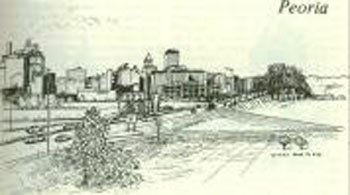
(62.1 per cent) — rated themselves "very
satisfied" while an additional 27 per cent
found themselves "somewhat satisfied" with
their jobs. Only about 10 per cent of those
interviewed noted a significant degree of job
dissatisfaction. Among the three cities, 73.7
per cent of Peoria men felt "very satisfied,"
as opposed to 58.7 per cent of Springfield
and 56.3 per cent of Decatur men. Except in
Peoria, women were more satisfied with
their jobs than were men. Only half of the
Peoria women judged themselves "very
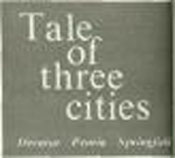
January 1977 / Illinois Issues / 13
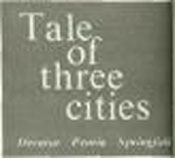
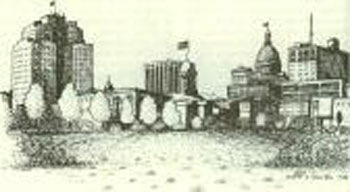
Springfield
14 / January 1977 / Illinois Issues
Selected State Reports
• "The Governments of Springfield: A
Survey of Citizen Attitudes," Center for the
Study of Middle-size Cities, Sangamon
State University, Springfield (1974).
Results of 1974 citizens' attitudes toward
and knowledge of local government. Questions regarding Springfield, Sangamon
County, adjacent townships and special
districts were considered.
Demographic profiles for Springfield,
Peoria, Decatur, Bloomington, Normal,
Champaign and Urbana are given. Population growth, racial composition, educational
levels, employment status, occupations,
income, marital status, housing characteristics and means of work transportation are
considered.
To measure the incidence of adolescent
delinquency and to identify correlates of
certain types of violative behavior, 3,112
Illinois youths ages 14-18 were surveyed.
Survey findings are summarized in these
areas: violence, theft, alcohol use, drug use,
auto violations, and impropriety.
Includes numerous maps and tables on
such subjects as the existing Illinois airport
system, levels of service, forecasts of
aeronautical demand, and objectives of the
state plan.
January 1977 / Illinois Issues / 15